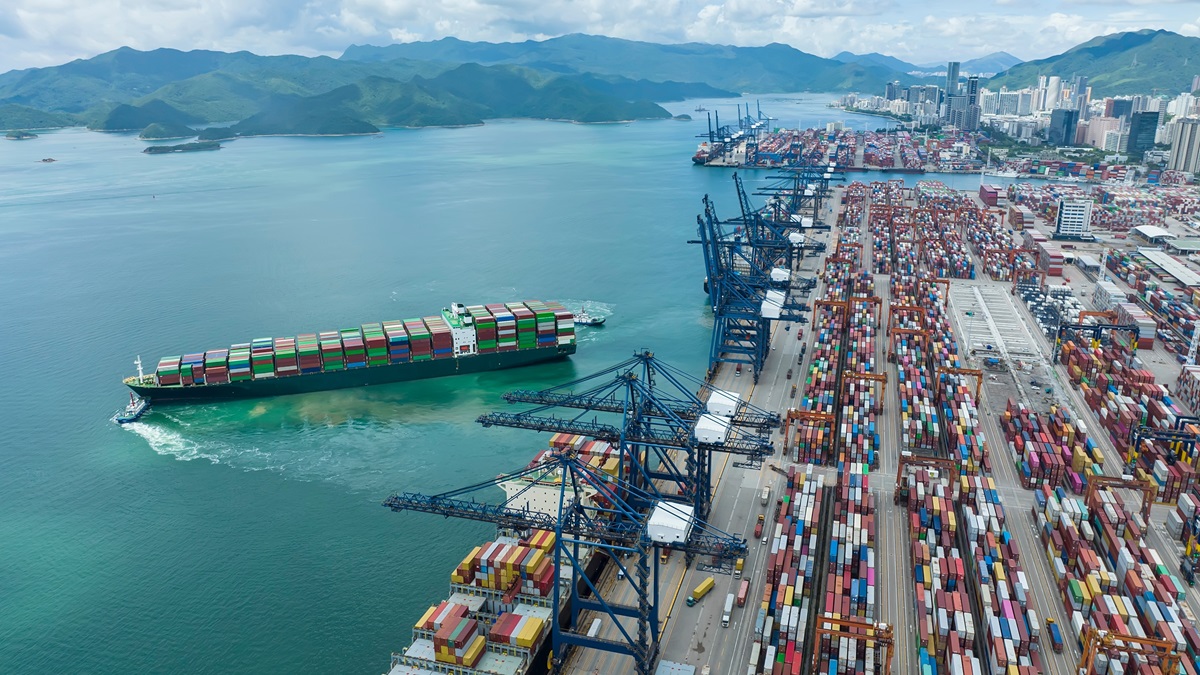A continued slump in goods trade. An evolving technological landscape. The Global South is gaining weight. A rethink of development strategies is both timely and timeless.
© Shutterstock/asharkyu | Yantian International Container Terminal, Shenzhen, China.
Changing patterns of world trade are posing new challenges to the Global South, urging a broader policy approach to revitalizing development in the age of public discontent.
After stagnating in 2023, international trade is projected to grow by about 2% in real terms in 2024, according the latest Trade and Development Report released on 29 October.
The rebound is mainly driven by a revival of merchandise trade that accounts for 75% of global commerce in value.
Trade in services, on the other hand, is projected to expand faster, at around 5% in 2024. Transport and travel components, notably, posted double-digit growth rates during the first quarter of the year.
Rising South-South trade
Between 2007 and 2023, South-South trade more than doubled from $2.3 trillion to $5.6 trillion, signaling new opportunities for developing economies.
This can mean lowering dependence on their traditional trade partners, fostering regional economic integration, and negotiating favourable trade and financing agreements.
A pivot in world trade
At the global level, while trade has increased in absolute terms, its growth compared to GDP has stalled since the 2008–2009 financial crisis.
The trade-to-GDP ratio is an indicator of the relative importance of trade in global economic output.
Between 1995 and 2007, trade grew twice as fast as global GDP, but the share of trade as a percentage of GDP peaked at 25% in 2008 and has stagnated or declined since, gradually levelling off in 2023.
Implications for developing countries
The report flags that lower-income economies, which once relied on export-led manufacturing growth to create jobs, boost productivity and drive economic transformation, find this model increasingly limited.
The rise of protectionist policies in advanced economies, along with rapid technological advancements and supply chain disruptions, could threaten efforts by developing countries to advance from low- to high-productivity economic activities.
Such a shift is currently captured by the sophistication and variety of exports, the intensity of fixed capital and the weight of industry and services in total GDP.
Policy recommendations from UN Trade and Development
Navigating the challenges posed by a fragmenting trading system requires coordinated policy responses nationally and globally.
To adapt to the reconfiguration of global trade and the impact of new technologies, UN Trade and Development underscores the need for developing countries to strengthen their domestic industries and reduce vulnerability to global economic shocks.
It calls for a balanced strategy that targets both manufacturing and services, including non-traded sectors, to create quality jobs and boost productivity.
Such policies must be supported by international agreements that prevent trade conflicts and guarantee access to global markets and financing.
Meanwhile, multilateral institutions, like the World Trade Organization (WTO), need to play a bigger role in managing the risks of trade fragmentation and ensuring that developing countries have a voice in shaping the future of the global trade system.
Efforts to reform WTO rules on industrial subsidies and trade barriers will be crucial in mitigating negative effects.

